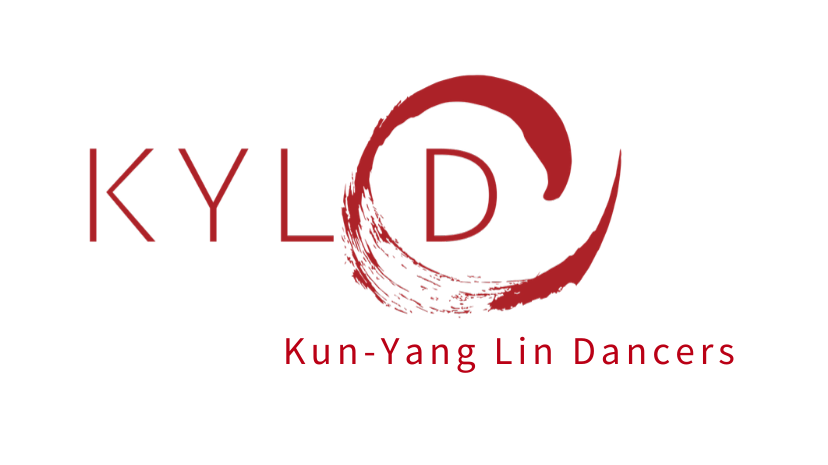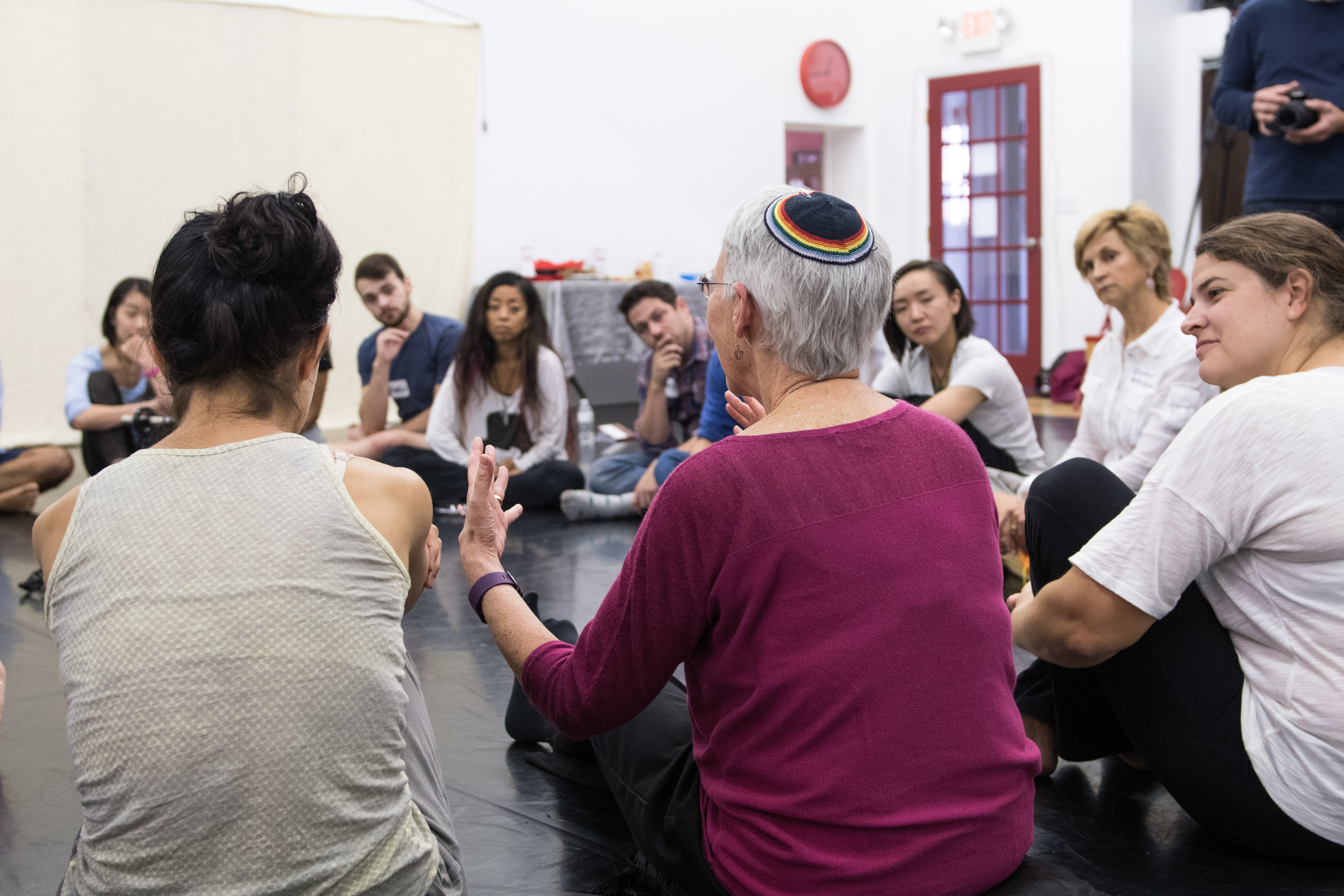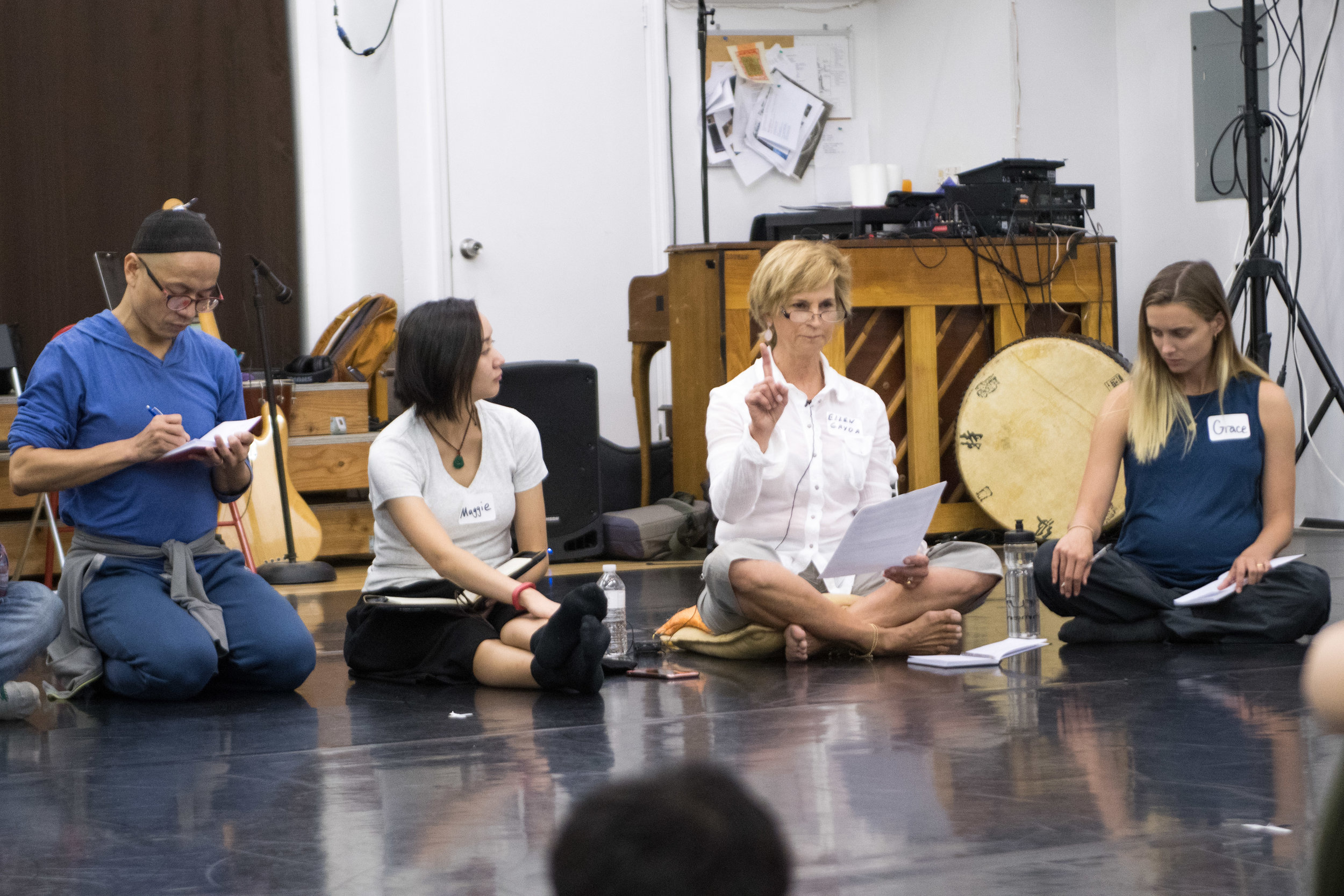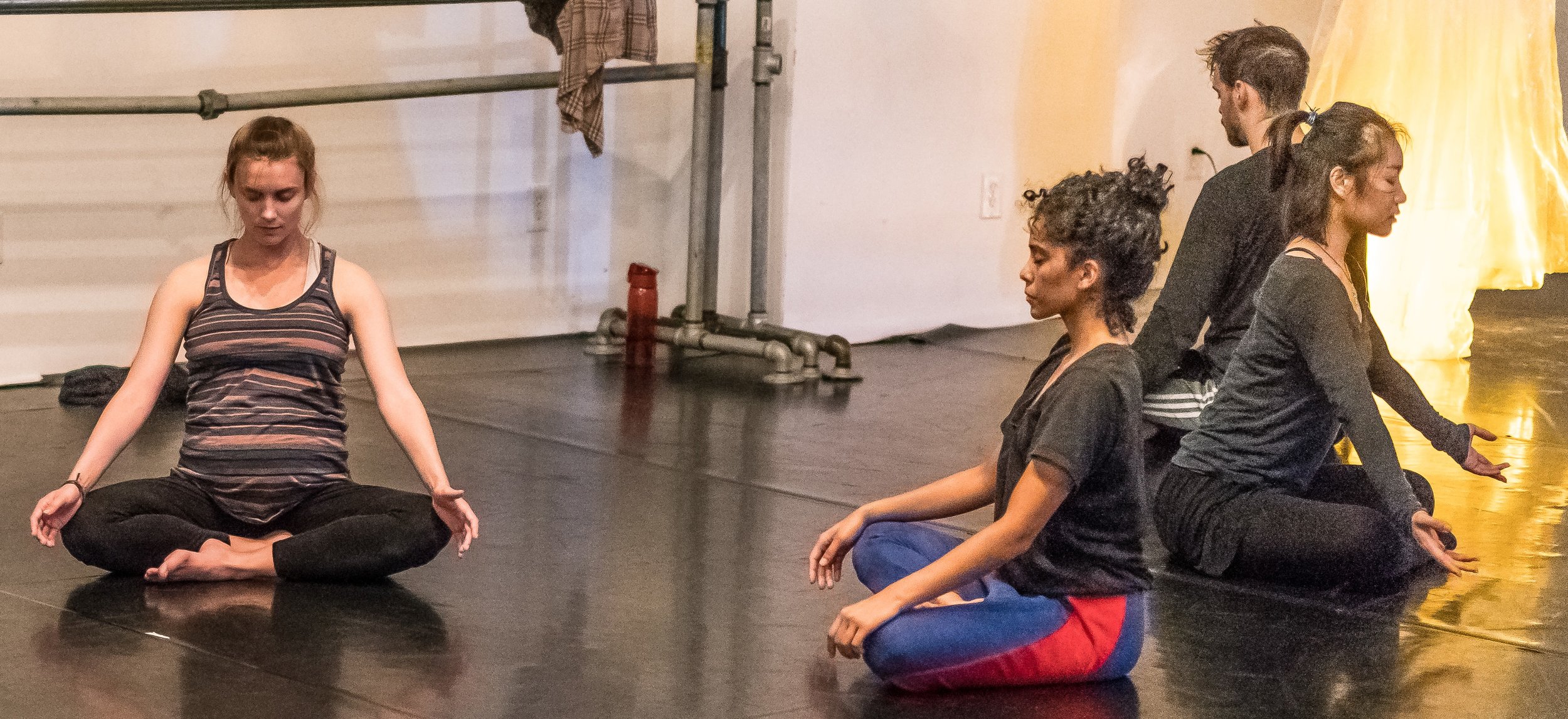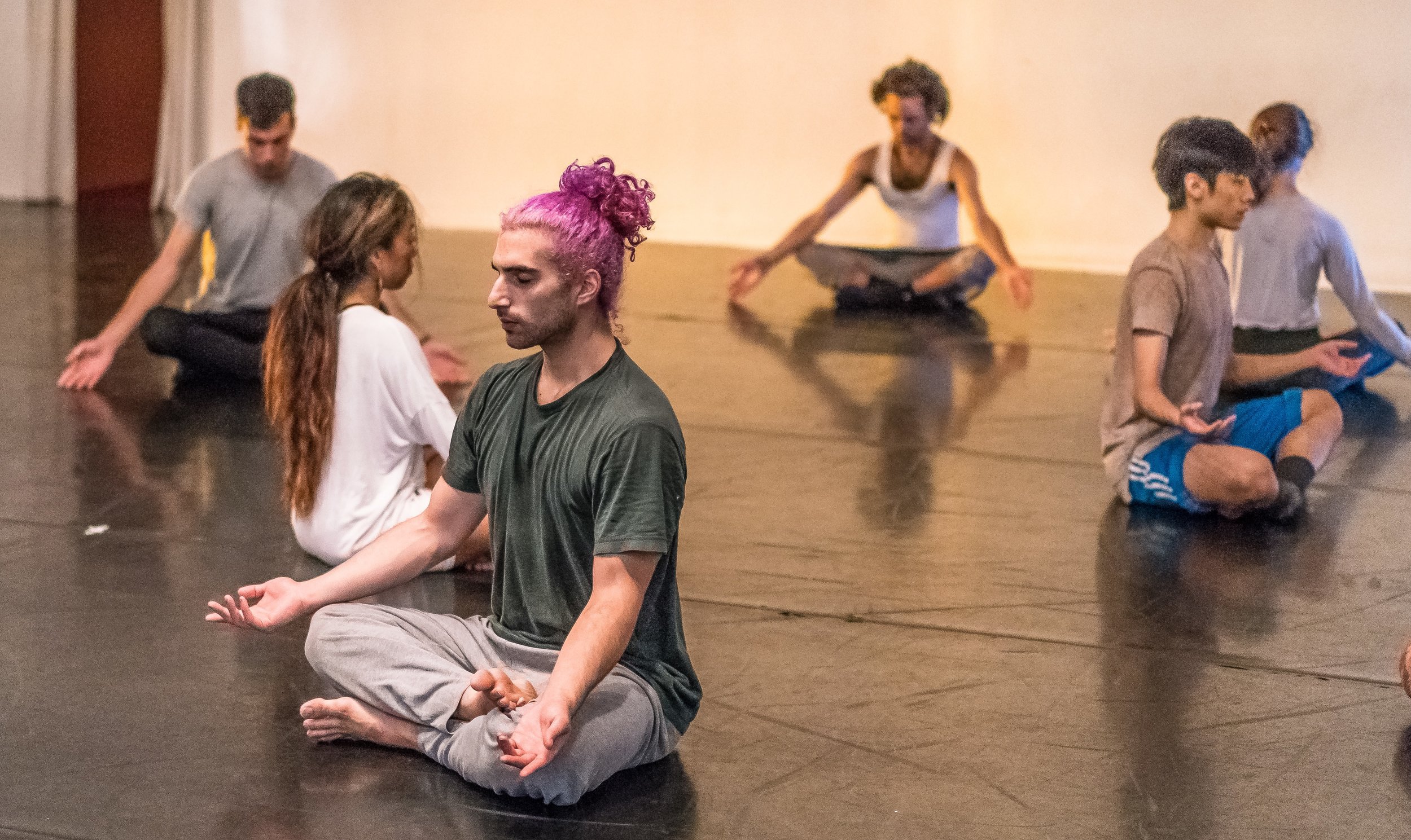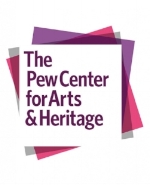Community participants shared stories, practices, and objects during the Story Circles. In addition to the things about which they spoke, I noticed that they also engaged in a specific preparation in anticipation for the physical practice of worship.
William (Presbyterian) tuned his violin.
Nzinga (Islam) picked up her prayer beads.
Dania (Islam) talked about rolling out her prayer mat.
Sue (Judaism) put on her yarmulke. She blew a Ram’s horn, demonstrating part of the ritual that prepares for the Jewish New Year.
John (Christian) described people dipping their hands in water and touching their forehead, sternum, left shoulder, and then right shoulder when entering a church.
Nicole (Christian) spoke of sacred objects needed for the preparation of the Eucharist - the literal and metaphorical body and blood of Christ. She brought the chalice she was given upon her ordination.
Ellen (Native American) recounted entering a sweat lodge before a ritual dance.
Many of the participants spoke about the process of entering into a sacred building or space for worship - a Church (Christianity), a Temple or a Synagogue (Judaism), a Meeting House (The Friends Society or Quakerism), a Mosque (Islam) or another location as directed by the faith practice.
In Kun-Yang’s CHI Awareness Practice, there are rituals that the dance artists enact to prepare for the sacred process of dancing. We take off our shoes as we enter the space. We wear specific clothes for class and rehearsal. We are (usually) quiet as we enter the studio space and each individual takes a moment to prepare their body for movement - laying on the floor, stretching, rolling through the spine, and warming up the body.
Kun-Yang begins the practice with a quiet meditation guiding the dancers through a process of becoming aware of our internal and external space - of the studio and the community of dancers gathered with us. The class has a structure - as do many of the religious ceremonies that were discussed during the Story Circles.
In her article Why Practice Repeating Ordinary Bodily Movements?, Story Circle facilitator Kimerer LaMothe wrote that there are many everyday bodily movements in a religious practice. I’m recognizing that the preparation for practice is also a ritual.
These Story Circles are demonstrating that perhaps, from an outside perspective, there ARE more similarities between the practice of contemporary dance and religion than it might subjectively seem.
Do you practice a religion? Do you practice something “religiously”? How do you prepare?
~ Jessica Warchal-King
NOTE: To make a comment on this blog, you do not need to make an account- just click "Comment(s)" in bottom left hand corner, write your comment in the comment box that appears, click "Post Comment..." then type in your first and last name and click "Comment as Guest")
Major support for the Faith project has been provided by The Pew Center for Arts & Heritage, with additional support from the National Endowment for the Arts.
